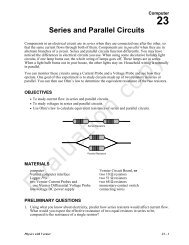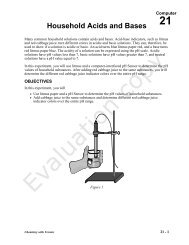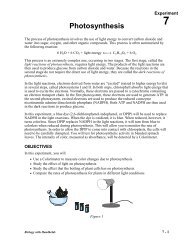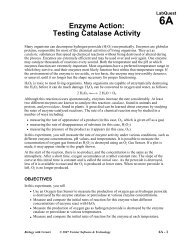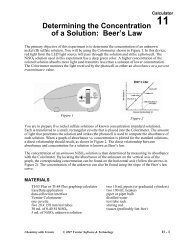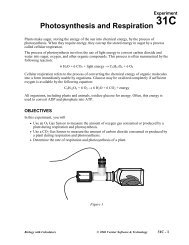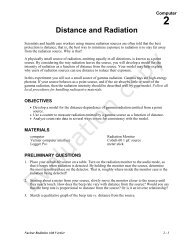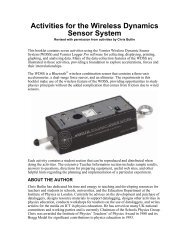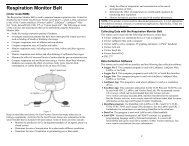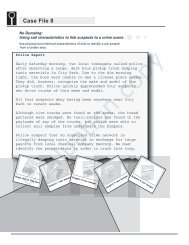Picket Fence Free Fall - Vernier Software & Technology
Picket Fence Free Fall - Vernier Software & Technology
Picket Fence Free Fall - Vernier Software & Technology
Create successful ePaper yourself
Turn your PDF publications into a flip-book with our unique Google optimized e-Paper software.
<strong>Picket</strong> <strong>Fence</strong> <strong>Free</strong> <strong>Fall</strong>DATA TABLETrial 1 2 3 4 5 6Slope (m/s 2 )Acceleration (m/s 2 )Minimum Maximum AverageAcceleration due to gravity, g ± m/s 2Precision %ANALYSIS1. From your six trials, determine the minimum, maximum, and average values for theacceleration of the <strong>Picket</strong> <strong>Fence</strong>. Record them in the data table.2. Describe in words the shape of the distance vs. time graph for the free fall of the picket fence.3. Describe in words the shape of the velocity vs. time graph. How is this related to the shape ofthe distance vs. time graph?4. The average acceleration you determined represents a single best value, derived from all yourmeasurements. The minimum and maximum values give an indication of how much themeasurements can vary from trial to trial; that is, they indicate the precision of yourmeasurement. One way of stating the precision is to take half of the difference between theminimum and maximum values and use the result as the uncertainty of the measurement.Express your final experimental result as the average value, ± the uncertainty. Round theuncertainty to just one digit and round the average value to the same decimal place.For example, if your minimum, average, and maximum values are 9.12, 9.93, and 10.84 m/s 2 ,express your result as g = 9.9 ± 0.9 m/s 2 . Record your values in the data table.5. Express the uncertainty as a percentage of the acceleration. This is the precision of yourexperiment. Enter the value in your data table. Using the example numbers from the last step,the precision would be0.99.9× 100% =6. Compare your measurement to the generally accepted value of g (from a textbook or othersource). Does the accepted value fall within the range of your values? If so, your experimentagrees with the accepted value.7. Inspect your velocity graph. How would the associated acceleration vs. time graph look?Sketch your prediction on paper. Change the y-axis to acceleration. Comment on anydifferences between the acceleration graph and your prediction. To examine the data pairs onthe displayed graph, tap any data point. As you tap each data point, the acceleration and timevalues are displayed to the right of the graph. Note that the vertical scale of the graph doesnot include zero. Is the variation as large as it appears?9 0 0Physics with <strong>Vernier</strong> 5 - 3




